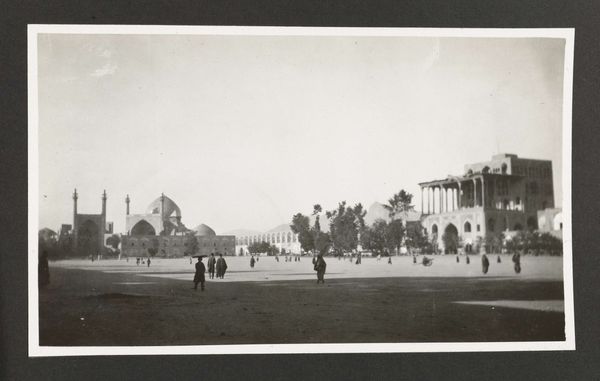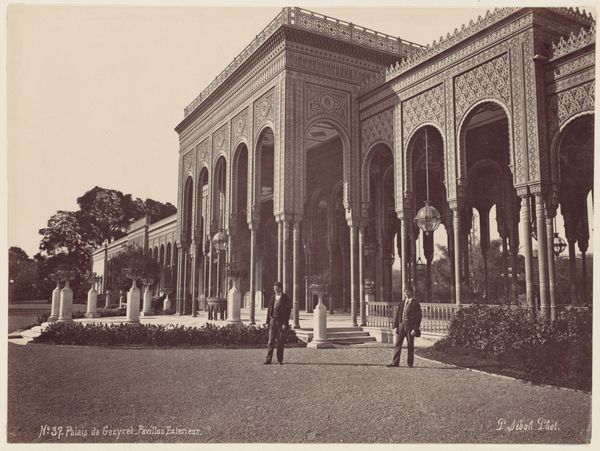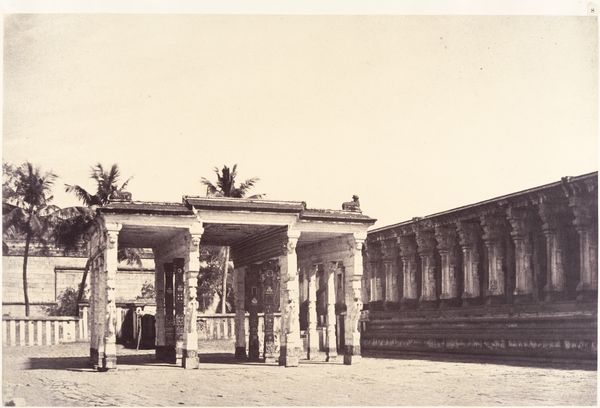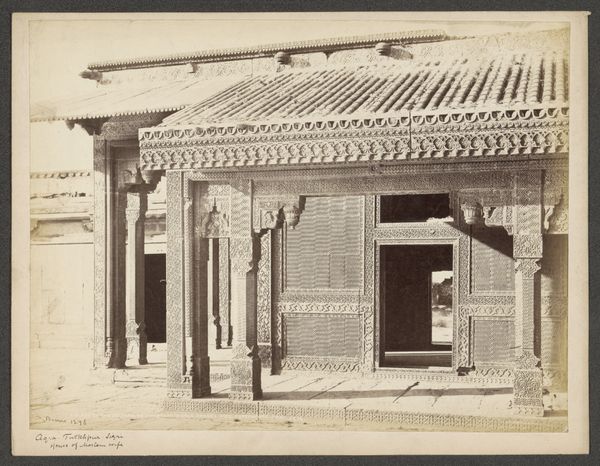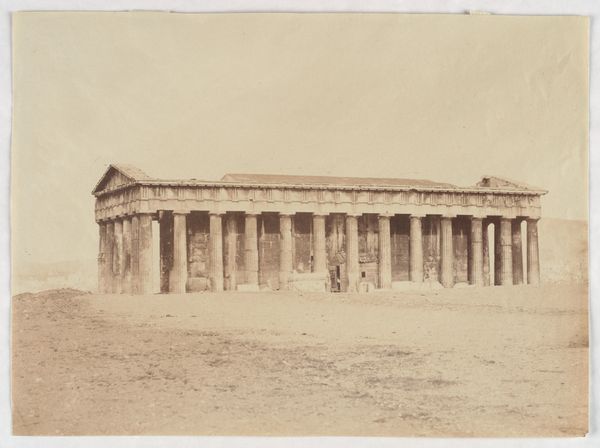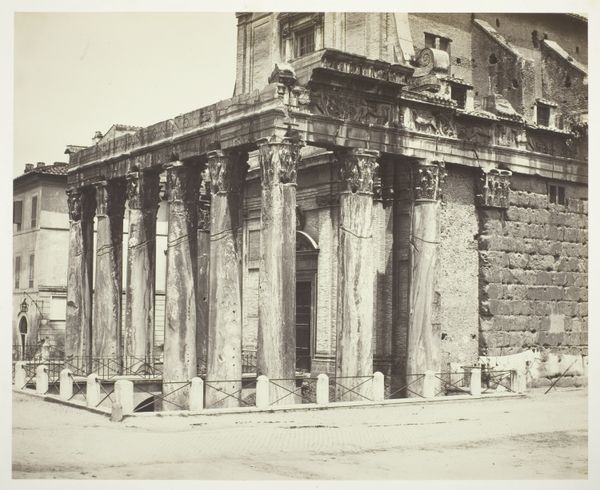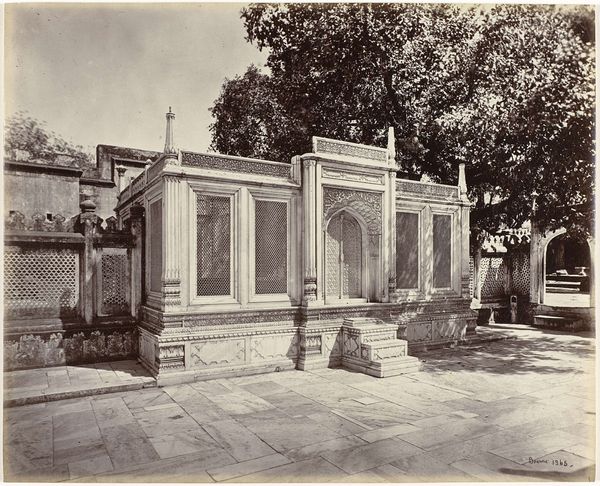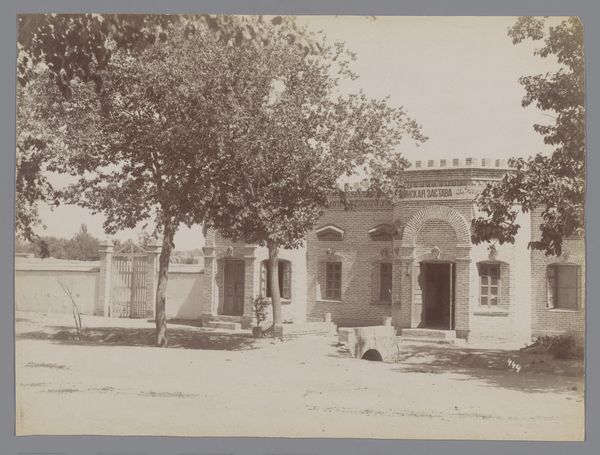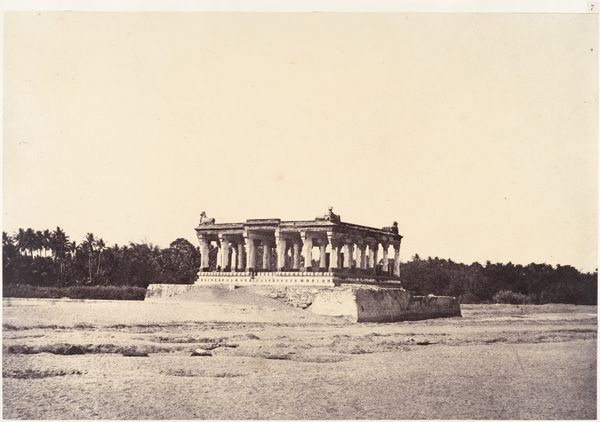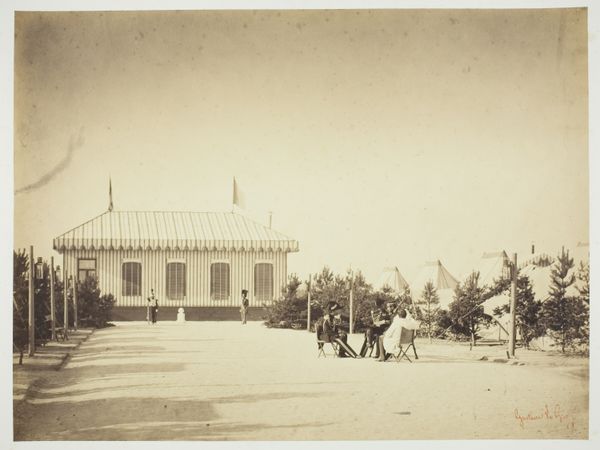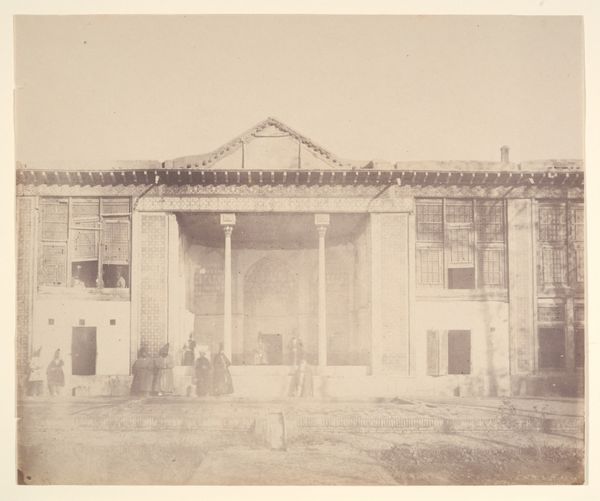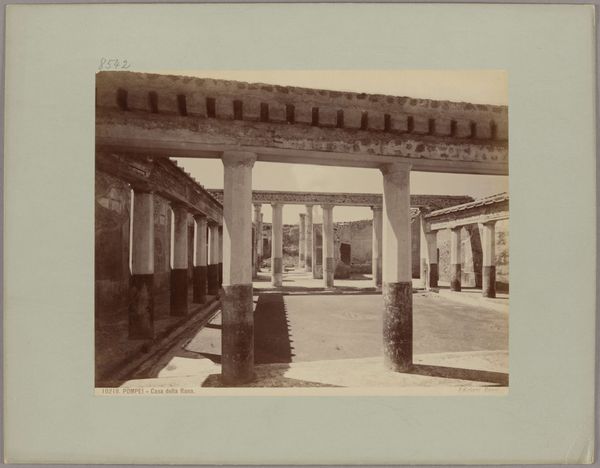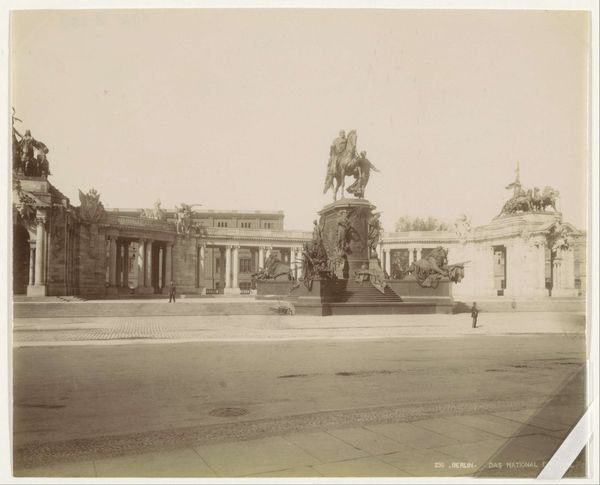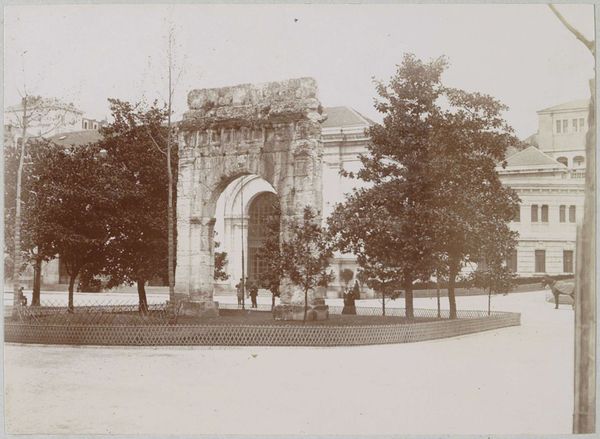
print, photography, architecture
# print
#
landscape
#
photography
#
orientalism
#
cityscape
#
islamic-art
#
architecture
Dimensions: height 104 mm, width 158 mm, height 124 mm, width 184 mm
Copyright: Rijks Museum: Open Domain
Curator: This is a photographic print entitled "Groot gebouw met vijver, Perzië," or "Large building with pond, Persia," by A.G.A. van Eelde, dating to around 1925. Editor: My immediate impression is one of solemn stillness, a balance between the imposing structure and its watery reflection. The monochrome palette contributes to this contemplative mood. Curator: Indeed. Let's consider this within its historical context. Van Eelde's photography falls under the broad umbrella of Orientalism, reflecting a Western gaze upon perceived exotic lands and cultures. The choice to photograph architecture and landscapes, common for the time, tells us about the artist’s aim in shaping perspectives and cultural understanding – or perhaps misunderstanding – through this image’s making. Editor: From a formal perspective, the composition relies heavily on symmetry and linear perspective, drawing the eye to the building's facade. The dark, heavy shadows contrast sharply with the lighter tones of the building’s surface, creating a strong visual rhythm. I am drawn to how the mirroring pond creates a subtle duplication of form. Curator: Absolutely, but what interests me is how the photographer might have viewed their labor. Creating such photographs involved navigating complex social landscapes, negotiating access, transporting cumbersome equipment, and adhering to evolving colonial power structures. The resulting images, therefore, serve not just as depictions but also as evidence of particular socio-economic relationships and power dynamics at play. Editor: But we cannot disregard the symbolic order instantiated. Note how the strong verticals of the columns establish the power of this structure, and the carefully composed landscaping is far more than simple record keeping. The reflections are more than technical prowess. They present a meditation on duality. Curator: Right, but that 'duality' becomes another element through which a viewer extracts something other about the subject’s reality. Was it framed from a position of colonial power, and how did that impact both how this image was made and how it has been interpreted? That, to me, is a crucial layer. Editor: Ultimately, regardless of one's cultural politics, the image compels consideration for its mastery in composition, tone, and form. The eye travels deliberately. Curator: And perhaps that mastery is what helps to conceal all that effort. To think of it otherwise provides new appreciation for it.
Comments
No comments
Be the first to comment and join the conversation on the ultimate creative platform.
